mysql path妙用
Posted 邹柯
tags:
篇首语:本文由小常识网(cha138.com)小编为大家整理,主要介绍了mysql path妙用相关的知识,希望对你有一定的参考价值。
CREATE TABLE `lc_c_user_path` ( `id` INT ( 10 ) UNSIGNED NOT NULL AUTO_INCREMENT, `user_id` VARCHAR ( 20 ) NOT NULL COMMENT \'用户标识\', `username` VARCHAR ( 100 ) DEFAULT NULL COMMENT \'用户名\', `store_id` VARCHAR ( 20 ) DEFAULT NULL COMMENT \'店铺id\', `user_id_path` text COMMENT \'当前用户上级用户标识\', `username_path` text COMMENT \'当前用户上级用户账号\', `store_id_path` text COMMENT \'当前用户上级用户店铺\', `complete_path` text COMMENT \'绑定邀请码的用户path\', PRIMARY KEY ( `id` ), UNIQUE KEY `IDX_U_I` ( `user_id` ) USING BTREE ) ENGINE = INNODB AUTO_INCREMENT = 16 DEFAULT CHARSET = utf8 COMMENT = \'用户user_id,username,store之间转化\';

INSERT INTO `lc_c_user_path`(`id`, `user_id`, `username`, `store_id`, `user_id_path`, `username_path`, `store_id_path`, `complete_path`) VALUES (1, \'us1\', \'un1\', \'s1\', \'us0\', \'un0\', \'s0\', \'us0\'); INSERT INTO `lc_c_user_path`(`id`, `user_id`, `username`, `store_id`, `user_id_path`, `username_path`, `store_id_path`, `complete_path`) VALUES (2, \'us2\', \'un2\', \'s2\', \'us1/us0\', \'un1/un0\', \'s1/s0\', \'us1/us0\'); INSERT INTO `lc_c_user_path`(`id`, `user_id`, `username`, `store_id`, `user_id_path`, `username_path`, `store_id_path`, `complete_path`) VALUES (3, \'us3\', \'un3\', \'s3\', \'us2/us1/us0\', \'un2/un1/un0\', \'s2/s1/s0\', \'us2/us1/us0\'); INSERT INTO `lc_c_user_path`(`id`, `user_id`, `username`, `store_id`, `user_id_path`, `username_path`, `store_id_path`, `complete_path`) VALUES (4, \'us4\', \'un4\', NULL, \'us3/us2/us1/us0\', \'un3/un2/un1/un0\', \'s3/s2/s1/s0\', \'us3/us2/us1/us0\'); INSERT INTO `lc_c_user_path`(`id`, `user_id`, `username`, `store_id`, `user_id_path`, `username_path`, `store_id_path`, `complete_path`) VALUES (5, \'us5\', \'un5\', \'s5\', \'us3/us2/us1/us0\', \'un3/un2/un1/un0\', \'s3/s2/s1/s0\', \'us4/us3/us2/us1/us0\'); INSERT INTO `lc_c_user_path`(`id`, `user_id`, `username`, `store_id`, `user_id_path`, `username_path`, `store_id_path`, `complete_path`) VALUES (6, \'us6\', \'un6\', \'s6\', \'us5/us3/us2/us1/us0\', \'un5/un3/un2/un1/un0\', \'s5/s3/s2/s1/s0\', \'us5/us4/us3/us2/us1/us0\'); INSERT INTO `lc_c_user_path`(`id`, `user_id`, `username`, `store_id`, `user_id_path`, `username_path`, `store_id_path`, `complete_path`) VALUES (7, \'us7\', \'un7\', \'s7\', \'us6/us5/us3/us2/us1/us0\', \'un6/un5/un3/un2/un1/un0\', \'s6/s5/s3/s2/s1/s0\', \'us6/us5/us4/us3/us2/us1/us0\'); INSERT INTO `lc_c_user_path`(`id`, `user_id`, `username`, `store_id`, `user_id_path`, `username_path`, `store_id_path`, `complete_path`) VALUES (8, \'us8\', \'un8\', \'s8\', \'us7/us6/us5/us3/us2/us1/us0\', \'un7/un6/un5/un3/un2/un1/un0\', \'s7/s6/s5/s3/s2/s1/s0\', \'us7/us6/us5/us4/us3/us2/us1/us0\'); INSERT INTO `lc_c_user_path`(`id`, `user_id`, `username`, `store_id`, `user_id_path`, `username_path`, `store_id_path`, `complete_path`) VALUES (9, \'us9\', \'un9\', \'\', \'us8/us7/us6/us5/us3/us2/us1/us0\', \'un8/un7/un6/un5/un3/un2/un1/un0\', \'s8/s7/s6/s5/s3/s2/s1/s0\', \'us8/us7/us6/us5/us4/us3/us2/us1/us0\'); INSERT INTO `lc_c_user_path`(`id`, `user_id`, `username`, `store_id`, `user_id_path`, `username_path`, `store_id_path`, `complete_path`) VALUES (10, \'us10\', \'un10\', \'s10\', \'us8/us7/us6/us5/us3/us2/us1/us0\', \'un8/un7/un6/un5/un3/un2/un1/un0\', \'s8/s7/s6/s5/s3/s2/s1/s0\', \'us9/us8/us7/us6/us5/us4/us3/us2/us1/us0\'); INSERT INTO `lc_c_user_path`(`id`, `user_id`, `username`, `store_id`, `user_id_path`, `username_path`, `store_id_path`, `complete_path`) VALUES (11, \'us11\', \'un11\', \'s11\', \'us10/us8/us7/us6/us5/us3/us2/us1/us0\', \'un10/un8/un7/un6/un5/un3/un2/un1/un0\', \'s10/s8/s7/s6/s5/s3/s2/s1/s0\', \'us10/us9/us8/us7/us6/us5/us4/us3/us2/us1/us0\'); INSERT INTO `lc_c_user_path`(`id`, `user_id`, `username`, `store_id`, `user_id_path`, `username_path`, `store_id_path`, `complete_path`) VALUES (12, \'us12\', \'un12\', \'\', \'us11/us10/us8/us7/us6/us5/us3/us2/us1/us0\', \'un11/un10/un8/un7/un6/un5/un3/un2/un1/un0\', \'s11/s10/s8/s7/s6/s5/s3/s2/s1/s0\', \'us11/us10/us9/us8/us7/us6/us5/us4/us3/us2/us1/us0\'); INSERT INTO `lc_c_user_path`(`id`, `user_id`, `username`, `store_id`, `user_id_path`, `username_path`, `store_id_path`, `complete_path`) VALUES (13, \'us13\', \'un13\', \'s13\', \'us11/us10/us8/us7/us6/us5/us3/us2/us1/us0\', \'un11/un10/un8/un7/un6/un5/un3/un2/un1/un0\', \'s11/s10/s8/s7/s6/s5/s3/s2/s1/s0\', \'us12/us11/us10/us9/us8/us7/us6/us5/us4/us3/us2/us1/us0\'); INSERT INTO `lc_c_user_path`(`id`, `user_id`, `username`, `store_id`, `user_id_path`, `username_path`, `store_id_path`, `complete_path`) VALUES (14, \'us14\', \'un14\', \'s14\', \'us13/us11/us10/us8/us7/us6/us5/us3/us2/us1/us0\', \'un13/un11/un10/un8/un7/un6/un5/un3/un2/un1/un0\', \'s13/s11/s10/s8/s7/s6/s5/s3/s2/s1/s0\', \'us13/us12/us11/us10/us9/us8/us7/us6/us5/us4/us3/us2/us1/us0\'); INSERT INTO `lc_c_user_path`(`id`, `user_id`, `username`, `store_id`, `user_id_path`, `username_path`, `store_id_path`, `complete_path`) VALUES (15, \'us15\', \'un15\', \'s15\', \'us14/us13/us11/us10/us8/us7/us6/us5/us3/us2/us1/us0\', \'un14/un13/un11/un10/un8/un7/un6/un5/un3/un2/un1/un0\', \'s14/s13/s11/s10/s8/s7/s6/s5/s3/s2/s1/s0\', \'us14/us13/us12/us11/us10/us9/us8/us7/us6/us5/us4/us3/us2/us1/us0\'); INSERT INTO `lc_c_user_path`(`id`, `user_id`, `username`, `store_id`, `user_id_path`, `username_path`, `store_id_path`, `complete_path`) VALUES (16, \'us16\', \'un16\', \'s16\', \'us1/us0\', \'un1/un0\', \'s1/s0\', \'us1/us0\'); INSERT INTO `lc_c_user_path`(`id`, `user_id`, `username`, `store_id`, `user_id_path`, `username_path`, `store_id_path`, `complete_path`) VALUES (17, \'us17\', \'un17\', \'s17\', \'us16/us1/us0\', \'un16/un1/un0\', \'s16/s1/s0\', \'us16/us1/us0\'); INSERT INTO `lc_c_user_path`(`id`, `user_id`, `username`, `store_id`, `user_id_path`, `username_path`, `store_id_path`, `complete_path`) VALUES (18, \'us18\', \'un18\', \'s18\', \'us3/us2/us1/us0\', \'un3/un2/un1/un0\', \'s3/s2/s1/s0\', \'us3/us2/us1/us0\'); INSERT INTO `lc_c_user_path`(`id`, `user_id`, `username`, `store_id`, `user_id_path`, `username_path`, `store_id_path`, `complete_path`) VALUES (19, \'us19\', \'un19\', \'s19\', \'us18/us3/us2/us1/us0\', \'un18/un3/un2/un1/un0\', \'s18/s3/s2/s1/s0\', \'us18/us3/us2/us1/us0\');

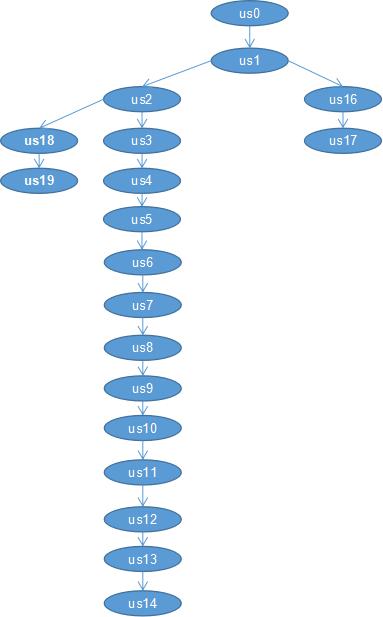
CREATE TABLE `lc_c_customer` ( `id` int(10) unsigned NOT NULL AUTO_INCREMENT, `user_id` varchar(20) NOT NULL COMMENT \'用户标识\', `partent_user_id` varchar(20) DEFAULT NULL COMMENT \'上级店铺id\', `pid` varchar(20) DEFAULT NULL COMMENT \'当前用户上级用户标识\', PRIMARY KEY (`id`), UNIQUE KEY `IDX_U_I` (`user_id`) USING BTREE ) ENGINE=InnoDB AUTO_INCREMENT=20 DEFAULT CHARSET=utf8 COMMENT=\'用户表\';

INSERT INTO `lc_c_customer`(`id`, `user_id`, `partent_user_id`, `pid`) VALUES (1, \'us1\', NULL, \'us0\'); INSERT INTO `lc_c_customer`(`id`, `user_id`, `partent_user_id`, `pid`) VALUES (2, \'us2\', \'us1\', \'us1\'); INSERT INTO `lc_c_customer`(`id`, `user_id`, `partent_user_id`, `pid`) VALUES (3, \'us3\', \'us2\', \'us2\'); INSERT INTO `lc_c_customer`(`id`, `user_id`, `partent_user_id`, `pid`) VALUES (4, \'us4\', \'us3\', \'us3\'); INSERT INTO `lc_c_customer`(`id`, `user_id`, `partent_user_id`, `pid`) VALUES (5, \'us5\', \'us3\', \'us4\'); INSERT INTO `lc_c_customer`(`id`, `user_id`, `partent_user_id`, `pid`) VALUES (6, \'us6\', \'us5\', \'us5\'); INSERT INTO `lc_c_customer`(`id`, `user_id`, `partent_user_id`, `pid`) VALUES (7, \'us7\', \'us6\', \'us6\'); INSERT INTO `lc_c_customer`(`id`, `user_id`, `partent_user_id`, `pid`) VALUES (8, \'us8\', \'us7\', \'us7\'); INSERT INTO `lc_c_customer`(`id`, `user_id`, `partent_user_id`, `pid`) VALUES (9, \'us9\', \'us8\', \'us8\'); INSERT INTO `lc_c_customer`(`id`, `user_id`, `partent_user_id`, `pid`) VALUES (10, \'us10\', \'us8\', \'us9\'); INSERT INTO `lc_c_customer`(`id`, `user_id`, `partent_user_id`, `pid`) VALUES (11, \'us11\', \'us10\', \'us10\'); INSERT INTO `lc_c_customer`(`id`, `user_id`, `partent_user_id`, `pid`) VALUES (12, \'us12\', \'us11\', \'us11\'); INSERT INTO `lc_c_customer`(`id`, `user_id`, `partent_user_id`, `pid`) VALUES (13, \'us13\', \'us11\', \'us12\'); INSERT INTO `lc_c_customer`(`id`, `user_id`, `partent_user_id`, `pid`) VALUES (14, \'us14\', \'us13\', \'us13\'); INSERT INTO `lc_c_customer`(`id`, `user_id`, `partent_user_id`, `pid`) VALUES (15, \'us15\', \'us14\', \'us14\'); INSERT INTO `lc_c_customer`(`id`, `user_id`, `partent_user_id`, `pid`) VALUES (16, \'us16\', \'us1\', \'us15\'); INSERT INTO `lc_c_customer`(`id`, `user_id`, `partent_user_id`, `pid`) VALUES (17, \'us17\', \'us16\', \'us16\'); INSERT INTO `lc_c_customer`(`id`, `user_id`, `partent_user_id`, `pid`) VALUES (18, \'us18\', \'us3\', \'us17\'); INSERT INTO `lc_c_customer`(`id`, `user_id`, `partent_user_id`, `pid`) VALUES (19, \'us19\', \'us18\', \'us18\');
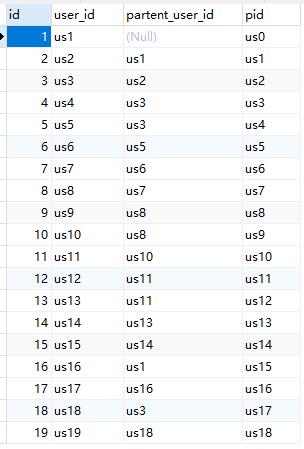
CREATE TABLE `lc_c_store` ( `id` varchar(20) NOT NULL, `user_id` varchar(20) NOT NULL DEFAULT \'0\' COMMENT \'客户id\', `name` varchar(64) DEFAULT \'0\' COMMENT \'店铺名字\', PRIMARY KEY (`id`), UNIQUE KEY `IDX_U` (`user_id`) ) ENGINE=InnoDB DEFAULT CHARSET=utf8 COMMENT=\'店铺表\';

INSERT INTO `lc_c_store`(`id`, `user_id`, `name`) VALUES (\'s1\', \'us1\', \'us1的云店\'); INSERT INTO `lc_c_store`(`id`, `user_id`, `name`) VALUES (\'s10\', \'us10\', \'us10的云店\'); INSERT INTO `lc_c_store`(`id`, `user_id`, `name`) VALUES (\'s11\', \'us11\', \'us11的云店\'); INSERT INTO `lc_c_store`(`id`, `user_id`, `name`) VALUES (\'s13\', \'us13\', \'us13的云店\'); INSERT INTO `lc_c_store`(`id`, `user_id`, `name`) VALUES (\'s14\', \'us14\', \'us14的云店\'); INSERT INTO `lc_c_store`(`id`, `user_id`, `name`) VALUES (\'s15\', \'us15\', \'us15的云店\'); INSERT INTO `lc_c_store`(`id`, `user_id`, `name`) VALUES (\'s16\', \'us16\', \'us16的云店\'); INSERT INTO `lc_c_store`(`id`, `user_id`, `name`) VALUES (\'s17\', \'us17\', \'us17的云店\'); INSERT INTO `lc_c_store`(`id`, `user_id`, `name`) VALUES (\'s18\', \'us18\', \'us18的云店\'); INSERT INTO `lc_c_store`(`id`, `user_id`, `name`) VALUES (\'s19\', \'us19\', \'us19的云店\'); INSERT INTO `lc_c_store`(`id`, `user_id`, `name`) VALUES (\'s2\', \'us2\', \'us2的云店\'); INSERT INTO `lc_c_store`(`id`, `user_id`, `name`) VALUES (\'s3\', \'us3\', \'us3的云店\'); INSERT INTO `lc_c_store`(`id`, `user_id`, `name`) VALUES (\'s5\', \'us5\', \'us5的云店\'); INSERT INTO `lc_c_store`(`id`, `user_id`, `name`) VALUES (\'s6\', \'us6\', \'us6的云店\'); INSERT INTO `lc_c_store`(`id`, `user_id`, `name`) VALUES (\'s7\', \'us7\', \'us7的云店\'); INSERT INTO `lc_c_store`(`id`, `user_id`, `name`) VALUES (\'s8\', \'us8\', \'us8的云店\');

CREATE TABLE `lc_c_store_general` ( `id` bigint(11) unsigned NOT NULL AUTO_INCREMENT, `store_id` varchar(20) DEFAULT NULL COMMENT \'对应店铺表id\', `user_count` bigint(11) DEFAULT \'0\' COMMENT \'客户数,即 下一级别的用户数\', PRIMARY KEY (`id`) ) ENGINE=InnoDB AUTO_INCREMENT=17 DEFAULT CHARSET=utf8 COMMENT=\'店铺销售数据表\';

INSERT INTO `lc_c_store_general`(`id`, `store_id`, `user_count`) VALUES (1, \'s1\', 2); INSERT INTO `lc_c_store_general`(`id`, `store_id`, `user_count`) VALUES (2, \'s2\', 1); INSERT INTO `lc_c_store_general`(`id`, `store_id`, `user_count`) VALUES (3, \'s3\', 3); INSERT INTO `lc_c_store_general`(`id`, `store_id`, `user_count`) VALUES (4, \'s5\', 1); INSERT INTO `lc_c_store_general`(`id`, `store_id`, `user_count`) VALUES (5, \'s6\', 1); INSERT INTO `lc_c_store_general`(`id`, `store_id`, `user_count`) VALUES (6, \'s7\', 1); INSERT INTO `lc_c_store_general`(`id`, `store_id`, `user_count`) VALUES (7, \'s8\', 2); INSERT INTO `lc_c_store_general`(`id`, `store_id`, `user_count`) VALUES (8, \'s10\', 1); INSERT INTO `lc_c_store_general`(`id`, `store_id`, `user_count`) VALUES (9, \'s11\', 2); INSERT INTO `lc_c_store_general`(`id`, `store_id`, `user_count`) VALUES (10, \'s13\', 1); INSERT INTO `lc_c_store_general`(`id`, `store_id`, `user_count`) VALUES (11, \'s14\', 1); INSERT INTO `lc_c_store_general`(`id`, `store_id`, `user_count`) VALUES (12, \'s15\', 0); INSERT INTO `lc_c_store_general`(`id`, `store_id`, `user_count`) VALUES (13, \'s16\', 1); INSERT INTO `lc_c_store_general`(`id`, `store_id`, `user_count`) VALUES (14, \'s17\', 0); INSERT INTO `lc_c_store_general`(`id`, `store_id`, `user_count`) VALUES (15, \'s18\', 1); INSERT INTO `lc_c_store_general`(`id`, `store_id`, `user_count`) VALUES (16, \'s19\', 0);
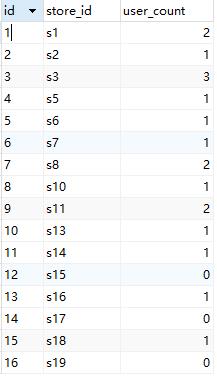
查看用户us2的上级path complete_path
select * from lc_c_user_path where user_id=\'us2\';

查看用户us2的所有下级用户
select * from lc_c_user_path where complete_path like \'%us2/us1/us0\';

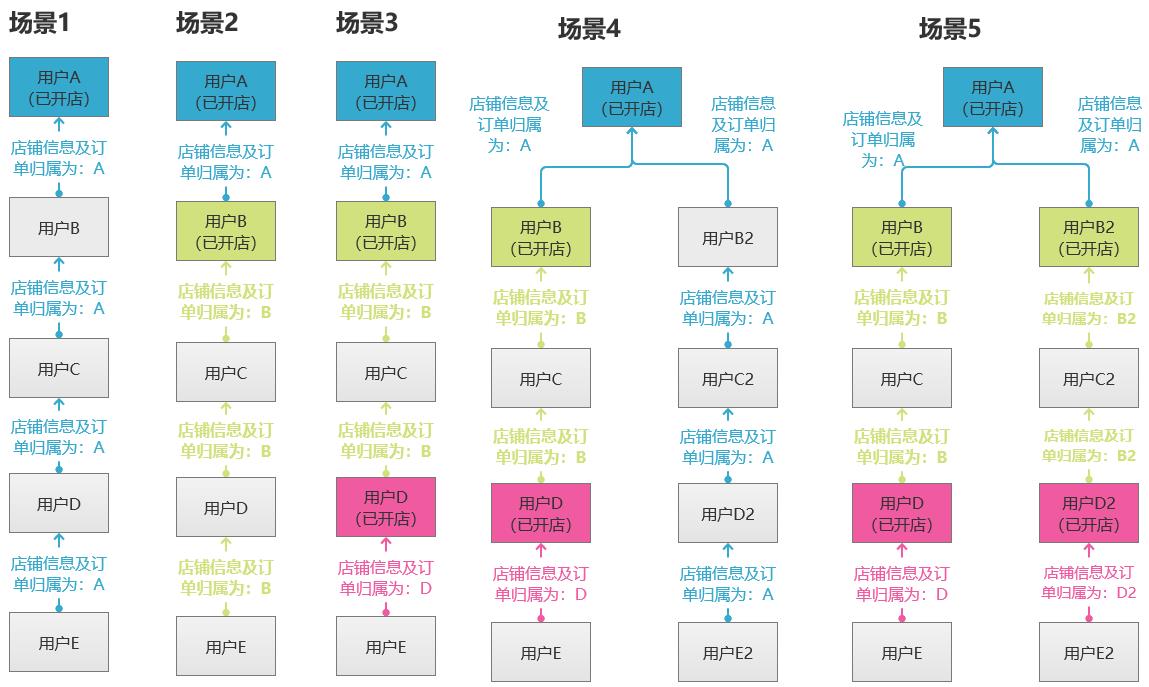
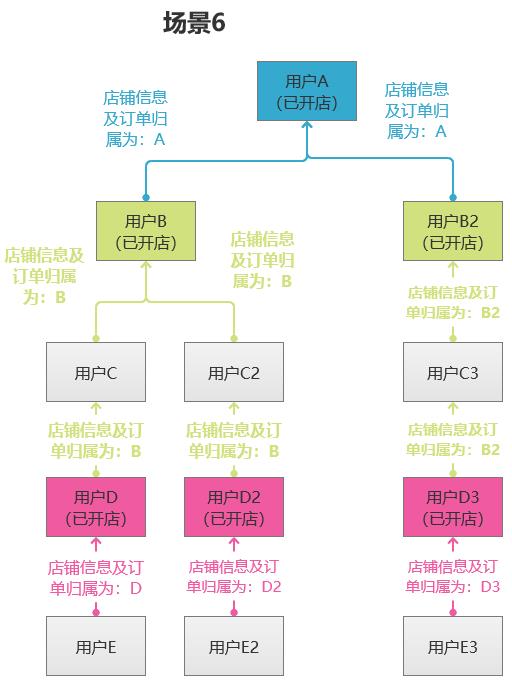
某个开店用户下的客户数
select partent_user_id,count(1) as count from lc_c_customer where 1=1 GROUP BY partent_user_id
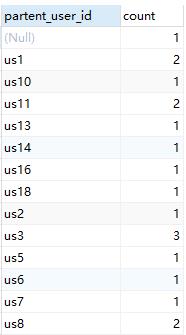
当某个店铺开店,更新lc_c_customer表的partent_user_id字段,即更新当前开店用户的所有下级的partent_user_id,此partent_user_id为最近的已开店的上级的user_id

partent_user_id可以通过获取user_id_path的第一个就是它的直接上级的已开店的partent_user_id
参考代码:

/** * desc 更新用户链条关系 */ public function upUserChain(){ $where[\'create_time\']=array(\'gt\',"2016-01-01 00:00:00"); $storeM=M(\'c_store\'); $data=$storeM->where($where)->order(\'create_time asc\')->find(); if(empty($data)){ exit(\'没有数据需要更新\'); } $openStoreUserId=$dat以上是关于mysql path妙用的主要内容,如果未能解决你的问题,请参考以下文章
